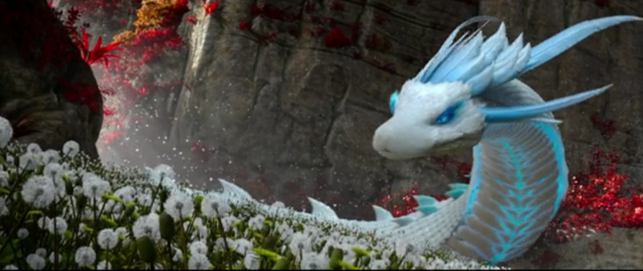Another American author featured as a speaker at the recent virtual World Fantasy Con 2020 is Laura VanArendonk Baugh, and when I saw she had a few books set in Japan, I was intrigued since I love the East Asian fox myth and have written some far less traditional books featuring them myself. The first book in Baugh’s duology is Kitsune-Tsuki, a short novella of only 90 pages written in 2012 that serves as an introduction to the characters and traditional Japanese setting.
Baugh starts the book off with a slightly long glossary. Best practices in using foreign words in literary translation into English usually recommends translating as many of the foreign terms as possible into English and only retaining a sparing number that aren’t already loan words in English. It’s a little much here, though most English-speaking authors are most likely to be unfamiliar with translation guidelines like that, but she does it right when she uses many of the Japanese terms with the translation in English beside it. That makes things much easier for the reader if you want to retain the flavor of the culture. For foreign language majors, we become used to reading translations of novels with large sections of endnotes, but most of the general reading public can only tolerate a little of those kinds of foreign details intruding on their reading.
The story begins with onmyouji master Tsurugu being summoned to the house of one of the daimyo. Although the story doesn’t state the historical era or location, I would assume it is in the Heian era by default given some of the cultural details, such as the moon-gazing party complete with poetry contest that were popular during that time or the length of the lady of the manor’s hair. I would be interested to hear why she chose to approach the myth from the perspective of the male magician, however. It’s very traditional, but traditional stories about fox spirits normally are not terribly flattering to powerful women. I have never come across a traditional story from Japan depicting a male kitsune, though they are attested to in China, and modern Japanese pop culture and light novels certainly have filled in that gender gap with male fox characters. Baugh spoke at World Fantasy Con on other topics and read from her other works, so I didn’t get a chance to hear what she had in mind.
It does have some nice depictions of Tsurugu’s magic, though I’m more familiar with mudras from Buddhism and Indian traditional dance. Here’s one particularly charming moment:
…He opened his hands to reveal an orange animal, a dog or wolf or fox. ‘A trickster I may be, but never common.’ He set the origami figure on the mat beside his knee and watched as it bounded toward Shishio.
Shishio twitched backward, his hands falling naturally to his weapon, and then caught himself as the paper figure cavorted harmlessly…. (p.12)
By the end of the first chapter, Tsurugu is joined by a sidekick Shishio, who is a servant in the daimyo’s household, but the real story doesn’t begin until the second chapter with the mysterious theft of rice at an Inari Shrine, which kitsune statues typically guard. The rest of the book covers Tsurugu and Shishio collaborating to investigate the theft to determine if it was due to the supernatural meddling of kitsune, human thieves, or carelessness. There was a very popular series of novels in Japan that I read a volume of a long time ago featuring this kind of setup as well as a series of movies based on them that I’ll soon be covering, and this reminds me a little of those, too, with the almost detective story-style setup.
A surprising but satisfying plot twist near the end really made me sit up and take notice. Now I’m really intrigued by what the second, more substantial, volume may offer since it clearly isn’t as much of rehashing traditional tales than it first seemed. I’ll be looking at the second volume later this year in this space. This novella definitely evokes The Tale of Genji with its cultural details, though sometimes it seems too reliant on that novel for references and content. Admittedly, however, I’m far more familiar with the text of the old novel than most people, so perhaps it wouldn’t be noticed by the average American reader.
Clearly Baugh, also an anime fan, has done her homework on the cultural details, though what’s interesting to me from a research perspective is the nicknaming of the onmyouji’s sidekick Shishio as “Wolf,”or, ookami in Japanese. I have done a lot of work on the topic of wolf legends in Japan and have presented on it for a number of years now, but I don’t see any particular connection to that history in her reference here. It is a nice, seredipitous choice, however. The author’s website is https://lauravanarendonkbaugh.com/.















